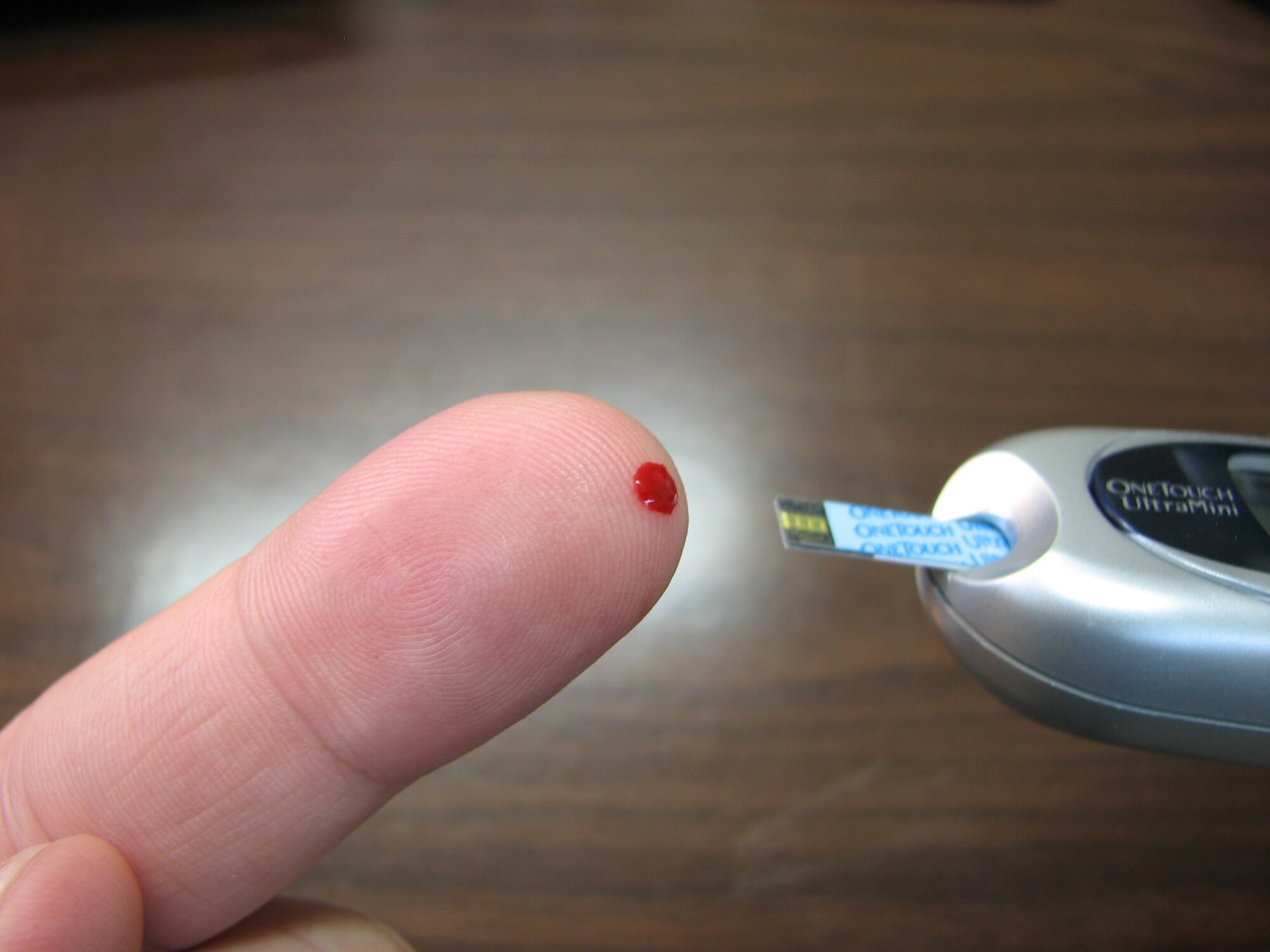Our bodies require a constant toil of control. From hormones to hormones we find ourselves adjusting variables like glucose to maintain good health. When we become diabetic it’s up to us to monitor and maintain good health.
Doing so involves using glucose monitor options. There are various types of glucose monitors available in the market, each with its own set of features and capabilities.
Here is a guide to the different types of glucose monitors.
Contents
Traditional Glucose Meter
Traditional glucose meters are the most widely used type of glucose monitor. They work by testing a patient’s finger prick glucose sample. The glucose meter reads the data from the sample and displays a result for the patient. Traditional glucose meters are easy to use, widely available, and provide reliable readings.
While they have the advantages of being accessible and cost-effective, the accuracy can vary depending on factors such as the size of the blood spot and how long you store the sample. People with diabetes must store and transport their test strips, and also must frequently keep track of all calculated results.
Additionally, these meters may not always provide real-time results. While traditional glucose meters have their limitations, they are a great starting point for anyone unfamiliar with the different types of glucose monitors.
Continuous Glucose Monitoring Systems
Continuous Glucose Monitoring Systems are devices that monitor and track an individual’s glucose levels over an extended period of time. This type of device is increasingly used as a part of an individualized treatment plan in order to better manage diabetes and insulin intake on an individual level.
Continuous Glucose Monitoring Systems are composed of three components:
Transmitter
The transmitter connects to a cose sensor and continually analyses the concentration of glucose in interstitial fluid. The transmitter then wirelessly transmits the data to a receiver. It can either display the information or be connected to a phone or computer for analysis and recording.
Glucose Sensor
A glucose sensor is a medical device that is used to measure the level of glucose in a person’s blood. It works by detecting the amount of glucose in a tiny sample of blood, usually obtained by pricking the finger with a lancet.
Receiver
A glucose receiver is a device used to display and record glucose readings from a continuous glucose monitoring (CGM) system. The receiver receives and stores data wirelessly transmitted from a small glucose sensor that is inserted under the skin, typically in the abdomen or upper arm.
Before purchasing a device, start your research by looking into a medicare diabetic supplies mail order for convenience.
Flash Glucose Monitoring Systems
This allows people to measure their blood sugar levels without the need for routine fingerstick tests. They consist of a small, water-resistant sensor that is worn on the back of the upper arm and a reader or smartphone app that is used to scan the sensor and display glucose data.
The flash glucose monitoring systems use a small, flexible filament. It is inserted just under the skin to measure glucose levels in the interstitial fluid. Users can obtain glucose readings by scanning the sensor with a reader or smartphone app.
You can use the readings for informed diabetes management decisions. This can be particularly beneficial for people who find fingerstick tests painful or inconvenient. Additionally, it provides users with real-time glucose data.
Continuous Interstitial Glucose Monitoring Systems
This provides real-time glucose data. It measures glucose levels in the interstitial fluid. It uses a small sensor that is inserted just under the skin.
This provides users with continuous glucose data. It is typically at five-minute intervals. allowing for real-time monitoring of glucose levels and more informed diabetes management decisions.
CIGM systems can be particularly useful for people with diabetes who require tight glucose control. Especially with type 1 diabetes or those who are pregnant. The CIGM systems can provide real-time alerts when glucose levels are dropping.
Non-Invasive Glucose Monitors
Non-invasive glucose monitors do not require a blood sample. They are typically designed to be more convenient and less painful than traditional blood glucose meters. Instead, they use alternative methods to measure glucose levels, such as:
Infrared Spectroscopy
Infrared spectroscopy is a popular way to measure glucose levels in the blood. It is non-invasive and very accurate. Infrared light is used to determine the levels of glucose present in the blood. It is then converted into an electric signal for the user to read.
Skin Impedance
The monitor uses sensors on the patient’s skin to measure changes in voltage across a saline solution. It works by sending a small electrical current through the user’s skin and detecting changes in the water content of the area. Due to the low level of current users and the insignificant temperature range of this monitor, skin irritation and external heat sources are not a factor.
Optical Sensors
Optical sensors are the most recent development in glucose monitoring technology. They measure glucose levels in the interstitial fluid, which is the fluid that surrounds all cells. They measure glucose levels directly, without the need for a strip or lancet.
Optical sensors are very small and light, making them convenient and comfortable to wear. They have a much faster response time than other glucose monitor options, allowing patients to make better-informed decisions and take the necessary steps to manage their blood glucose levels.
Implantable Glucose Monitors
Implantable glucose monitors provide continuous readings of real-time glucose. They send data straight to a person’s phone or handheld device. No finger prick test will be necessary in most cases.
They are a long-term treatment modality to be used in diabetes patients. They are:
- Wirelessly powered
- Feature non-fluid contact
- Help facilitate insulin therapy decisions
Implantable glucose monitors maintain regular readings for trend analysis, in order to detect and predict the forthcoming highs and lows for more effective prevention and treatment of diabetes. They require quarterly replacement. The adjustment depends upon the individual’s results.
Choosing a Glucose Meter
Choosing a glucose meter can be an overwhelming task, given the wide range of options available on the market. Here are some important factors to consider when selecting a glucose meter:
Accuracy
It’s crucial to choose a glucose meter that provides accurate and reliable readings. Look for glucose meters approved by regulatory bodies such as the U.S. Food and Drug Administration (FDA) or the European Medicines Agency (EMA).
Cost
The cost of glucose meters can vary widely. Some glucose meters are relatively inexpensive, while others can be more costly. In addition to the initial cost of the meter, consider the cost of the test strips, lancets, and other supplies that you will need to use the meter.
Ease of Use
A glucose meter that is easy to use and requires minimal steps to obtain a reading can be beneficial, especially if you have limited dexterity or vision impairments.
Testing Time
Some glucose meters can provide readings within seconds, while others may take longer. If you prefer a faster testing time, look for a glucose meter that provides rapid results.
Memory
Many glucose meters have the ability to store previous readings, which can be helpful for tracking trends in your glucose levels over time. Consider a meter that has a memory feature if you would like to review your glucose level history.
Connectivity
Some glucose meters can connect to your smartphone or computer, allowing you to easily track your glucose levels over time. This can be especially helpful if you have diabetes and need to share your glucose readings with your healthcare provider.
Size
Consider the size and portability of the glucose meter. Most especially if you plan to use it while traveling or on the go.
Brand
It’s important to choose a reputable brand that has a good track record in the market. Consider asking your healthcare provider for recommendations on reliable brands.
The best glucose meter for you will depend on your individual needs and preferences. It’s important to speak with your healthcare provider before selecting a glucose meter, as they can provide guidance on selecting the right meter for your needs and can help ensure that you are using the meter correctly.
Learn about the Types of Glucose Monitors Today
Based on this guide, glucose monitors come in a variety of styles and forms to suit the needs of each user. No matter which type of monitor you choose, make sure it meets the specific needs of your own diabetes management.
Glucose monitors can be helpful for diabetes patients to keep track of their blood sugar levels. It is important to research and find the one that best fits your needs.
Talk to your doctor to learn more about the different types of glucose monitors monitors and decide which one will work best for you.
Did you find this article helpful? Check out the rest of our blogs!



